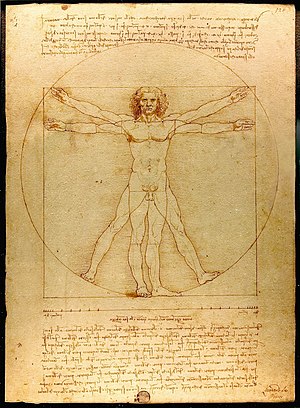1. The Devil’s Advocate
Time Stamp: 7:36

- Humanity
- Should a Satanist care about humanity?
- Crisis: natural disaster, pandemic, etc.
- Is there a hypocrisy in appreciating what humanity gives and detesting it?
- Herd immunity, the arts, society
- Where is the individual in humanity?
- Identifying who you are and what is important to you
- Should a Satanist care about humanity?
2. Infernal Informant
Time Stamp: 37:40

- Infernal Informant
- Humanity’s Origin Story Just Got More Complicated
https://gizmodo.com/humanitys-origin-story-just-got-more-complicated-1842616478- Human evolution was messy, with multiple human species living and interbreeding at the same time, in a convoluted process that eventually led to us.
- Fiction: anthropology and archaeology students were told that modern humans, formally known as Homo sapiens, could trace their evolutionary origins back in time by following a tidy, linear chain of ancestral species
- Three new science papers released today are affirming this view of human origins, providing evidence of overlapping groups of ancient, or archaic, human species
- new evidence speaks to the important role played by contemporaneous sister-species and sister-groups and the exchanging of fortuitous genetic material
- new Nature paper co-authored by Chris Stringer from the Natural History Museum in London and Rainer Grün from Griffith University in Australia
- a hominin skull found buried in a Zambian cave back in 1921 has been re-analyzed and given a new age of 299,000 years old, give or take about 25,000 years
- initially assigned to a brand new species called Homo rhodesiensis, but it was eventually re-assigned to Homo heidelbergensis, an archaic human that emerged some 600,000 years ago
- If the new dating is correct, “then like other human species, heidelbergensis lasted for at least several hundred thousand years,” said Stringer
- new dating coincides with the emergence of early modern humans, who debuted during the Middle Stone Age some 300,000 years ago
- the Natural History Museum in London describes in a press release:
- It is now looking like Africa and Eurasia were inhabited by a whole range of hominin species just a few hundred thousand years ago. While H. naledi was living in South Africa, H. heidelbergensis was surviving in South-Central Africa, and H. sapiens was emerging in Morocco and Ethiopia.
At the same time as all this, H. neanderthalensis was evolving in Europe, the Denisovans were developing in Asia, H. erectus may still have been clinging on in Indonesia, and two diminutive hominins, H. floresiensis and H. luzonensis, were living the island life in Southeast Asia.
- It is now looking like Africa and Eurasia were inhabited by a whole range of hominin species just a few hundred thousand years ago. While H. naledi was living in South Africa, H. heidelbergensis was surviving in South-Central Africa, and H. sapiens was emerging in Morocco and Ethiopia.
- the new finding is “consistent with the emerging picture from the fossil record and from paleogenetics that several species coexisted for a long time across the vast expanse of the African continent, variously contributing to the origins of modern humans, not only directly as ancestral populations, but also through interbreeding with surviving archaic human species.”
- second paper, also published today in Nature, investigates another archaic human species: Homo antecessor. The new research, led by Frido Welker and Enrico Cappellini from the University of Copenhagen
- shows that H. antecessor, who lived between 2.5 million and 770,000 years ago during the Early Stone Age, is a close relative to modern humans and Neanderthals, as previously suspected.
- “I fear that this study does not really answer the main question about H. antecessor, namely whether it’s the last common ancestor of Neanderthals and modern humans,” Harvati told Gizmodo. “The analysis found that antecessor was a close sister group to the last common ancestor, which is an interesting result, but might be expected given the chronology of H. antecessor.”
- third study, published today in PLOS One, Debra Bolter from Modesto Junior College in California, along with her colleagues, studied the partial skeleton of a juvenile Homo naledi—an archaic hominin discovered in South Africa just seven years ago
- The newly analyzed skeleton, named DH7, consists of some arm and leg bones and some teeth. The specimen was found in the Dinaledi Chamber of the Rising Star Cave System in South Africa.
- Intriguingly Homo naledi lived during the Middle Stone Age some 335,000 to 236,000 years ago, which coincides with modern humans. Accordingly, they could be a sister species to our own.
- “Understanding whether the two species shared features like pace of maturity may help us understand similarities in their adaptations or perhaps provide clues as to why one species survived, and the other went extinct,”
- there was no “Garden of Eden” in Africa, as the entire African continent served as the proverbial garden from which various human species emerged
- extinct hominins continue to live on in our DNA, and we can thank them for their genetic gifts, many of which undoubtedly contributed to our ongoing survival
- Humanity’s Origin Story Just Got More Complicated
3. Creature Feature
Time Stamp: 55:44

- The Nightingale (2018 film)
https://en.wikipedia.org/wiki/The_Nightingale_(2018_film)
https://www.imdb.com/title/tt4068576/- 2018 Australian period drama film written, directed, and co-produced by Jennifer Kent.
- The Babadook (2014)
- Set in 1825 in the British penal colony of Van Diemen’s Land (now the Australian state of Tasmania)
- follows a young woman convict seeking revenge for a terrible act of violence committed against her family
- stars Aisling Franciosi, Sam Claflin, and Baykali Ganambarr, and is mostly in English, with some Irish and Palawa kani.
- 2018 Australian period drama film written, directed, and co-produced by Jennifer Kent.

